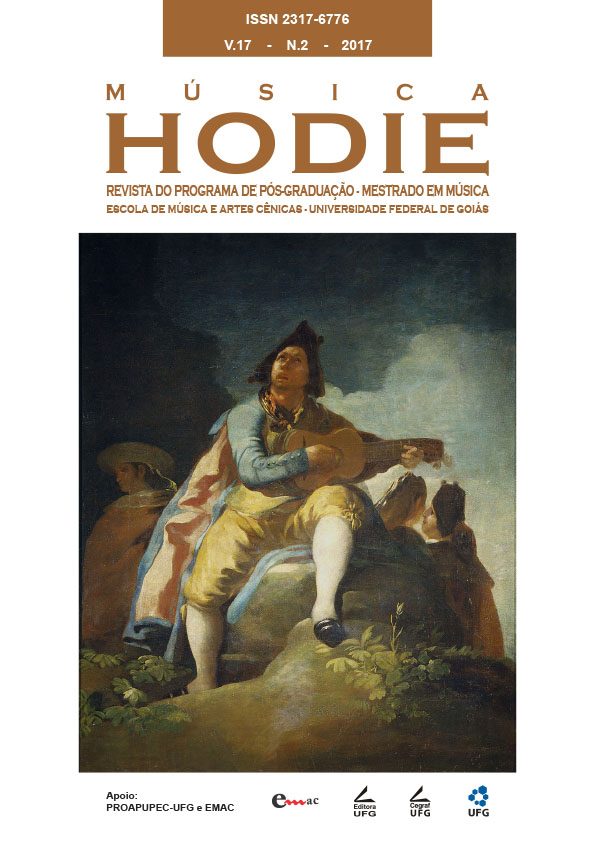Building an Effective Right-Hand Guitar Technique Around Injury Prevention Methods
DOI:
https://doi.org/10.5216/mh.v17i2.47145Palavras-chave:
Guitar technique, right-hand injuries, musician’s health, injury prevention.Resumo
The right-hand technique of guitarists needs to move forward when it comes to injury prevention. Guitarists are often diagnosed with median neuritis, carpal tunnel syndrome, lateral epicondylitis, medial epicondylitis, intersection syndrome, digital flexor tenosynovitis, stenosing tenosynovitis, and De Quervain's syndrome as a result of faulty right-hand technique. The causes generally converge to the lack of warm-ups, compression of the forearm muscles, excessive wrist flexion, extension, or sideways deviations, and repetitive movements with simultaneous muscle tension or strained positions. Based on evidence, this article provides technical suggestions that reduces tension and theoretically decreases the chances of playing-related injuries.
Downloads
Referências
BASTEPE-GRAY, Serap. Healthy hands: A Primer in Injury Management for guitarists. Soundboard, v. 40, n. 2, p. 24-32, 2014.
FJELLMAN-WIKLUND, Anncristine; CHESKY, Kris. Musculoskeletal and general health problems of acoustic guitar, electric guitar, electric bass, and banjo players. Medical Problems of Performing Artists, v. 21, n. 4, p. 169-177, 2006.
GOODWIN, Siana. (2003). Carpal tunnel syndrome and repetitive stress injuries. Ways to avoid it and work with it: A Rolfer’s perspective. Massage & Bodywork magazine, Available at < http://www.massageandbodywork.com/>. Accessed April 2, 2017.
HOGG, Karen. Here's how: Play without pain. Acoustic Guitar, v. 18, n. 11, p. 34-37, 2008.
MARQUES, Djalma N.; ROSSET-LLOBET, Jaume; MARQUES, M. F. F.; GURGEL, I. G. D.; AUGUSTO, L. G. S. Flamenco guitar as a risk factor for overuse syndrome. Medical Problems of Performing Artists, v. 18, n. 1, p. 11-14, 2003.
MITCHELL, Tamara. (2015). A painful melody: Repetitive strain injury among musicians. Working Well Ergonomics Information Website, Available at <http://www.working-well.org/articles/pdf/Musicians2.pdf >. Accessed April 2, 2017.
MULDOWNEY, Micah. Optimal muscle and tendon extension for guitar players.” Soundboard, v. 36, n. 4, p. 30-33, 2010.
RIETVELD, A. B. M. Dancers’ and musicians’ injuries. Clinical Rheumatology, v. 32, p. 425-434, 2013.
ROSENBAUM, Andrew J.; VANDERZANDEN, Jacqueline; MORSE, A. S.; UHL, R. L. Injuries complicating musical practice and performance: The hand surgeon’s approach to the musician-patient. The Journal of Hand Surgery, v. 37, n. 6, p. 1269-1272, 2012.
RUEDA, Virginia A. (2006). The healthy guitarist: How to save energy, avoid injury and get more out of your playing. Madrid, Spain: Acordes Concert.
SUNG, Kiseok; CHANG, Joonho; FREIVALDS, Andris; KONG, Yong-Ku. Development of the two-dimensional biomechanical hand model for a guitar player. Proceedings of the Human Factors and Ergonomics Society Annual Meeting, v. 57, n. 1, p. 1653-1657, 2013.















